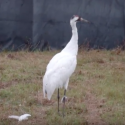Two different equine diseases detected in Wisconsin in recent weeks
Following news from the Wisconsin Department of Agriculture and Consumer Protection (DATCP) in early August that 2019’s first case of Eastern equine encephalitis was detected in Wisconsin, another horse in Wisconsin was diagnosed with a separate disease called equine infectious anemia.
It is the first time in 15 years this often-fatal blood-borne disease has been found in the state.
Keith Poulsen, director of the Wisconsin Veterinary Diagnostic Laboratory (WVDL) and a clinical professor at the University of Wisconsin–Madison School of Veterinary Medicine, says the farm where the equine infectious anemia case was found is quarantined for the epidemiology work up from DATCP. The positive result, he says, validates the state law requiring all horses to be tested “to allow them to travel, compete and participate in trail rides.”
Equine infectious anemia is caused by a virus that can spread if the blood of an infected horse comes into contact with another horse. Most often, it’s transmitted by biting flies that pick up the virus when feeding on a sick horse and then spread it to others. It can also be spread by humans using needles or other blood-contaminated materials on horses without sterilizing between animals.
According to the U.S. Department of Agriculture, just one-fifth of a teaspoon of blood from a horse with an acute infection contains enough virus to infect 1 million horses.
The virus causes damage to red blood cells, platelets and blood vessels. Horses with acute equine infectious anemia may develop rapid signs of disease and die within a few weeks. Often, the only symptom to appear before their health rapidly declines is a mild fever. Horses that survive acute infection can develop chronic disease marked by recurrent bouts of fever, weight loss, swelling, hemorrhaging, depression and anemia (low iron). These horses can become carriers that transmit virus particles without showing signs of illness.
The disease is not a risk to humans, but there is no vaccine and no way to eradicate the virus. It is controlled by annual voluntary testing to detect it, which WVDL conducts as a service in Wisconsin. The recent positive test was first made at WVDL and then confirmed by a national lab in Ames, Iowa.
On July 31, 2019, WVDL also helped confirm a case of Eastern equine encephalitis, a rare brain disease that is fatal in more than 90 percent of horses infected. It is transmitted mostly by mosquitoes. The 22-year-old quarter horse mare from Barron County was euthanized after showing symptoms.
Signs of EEE include fever, loss of appetite, walking aimlessly and other odd behavior, says Fernando J. Marqués, a clinical professor at SVM. “There may be lethargy or depression. There is a range of severity. Some seem completely out of their minds, crazy.”
Although a vaccine for EEE exists, the horse in Barron County had not been vaccinated. “Unfortunately, there is no treatment for this infection,” says Ailam Lim, section chief of virology at the laboratory. “Often, even before a lab diagnosis is complete, the animal must be euthanized since it is so weak and the chance of survival is so low. Those few that survive will have symptoms and neurological signs.”
Because the symptoms of brain infection can overlap with West Nile virus and equine herpesvirus 1 infection, a diagnosis of EEE is confirmed by genetic testing of brain tissue to evaluate the presence of the virus, says Lim. Although genetic sequencing can also confirm the virus, it is seldom necessary.
Like other diseases that cause viral encephalitis, humans can also become infected with EEE and while treatments do exist for people, survivors often have deficits in movement, memory and other areas.
Unlike with equine infectious anemia, horses cannot transmit EEE to each other. Both horses and humans contract the virus through mosquitoes, which likely pick up the virus when feeding on birds, a purported virus “reservoir.” Horses are a “dead-end” host for EEE, because the virus level in the blood does not build high enough to be transmitted back to a mosquito.
Still, EEE detection does have human health implications, Poulsen says. “This viral disease is an example of the close relationship between human, animal and environmental health. With a wet spring and early summer, the mosquito vector population is larger, increasing risk to mammalian hosts … Seeing disease in non-vaccinated horses is a reminder to minimize standing water, which is the breeding ground for mosquitoes.”
And while infection in people is rare, it is serious, Poulsen adds. “The risk can be decreased with mosquito avoidance such as clothing and repellents.”



